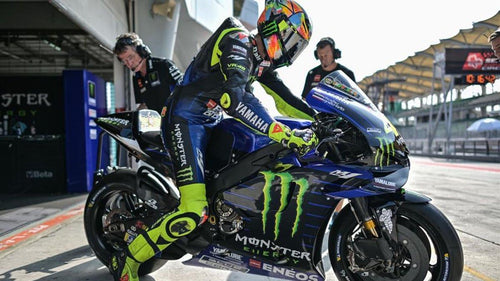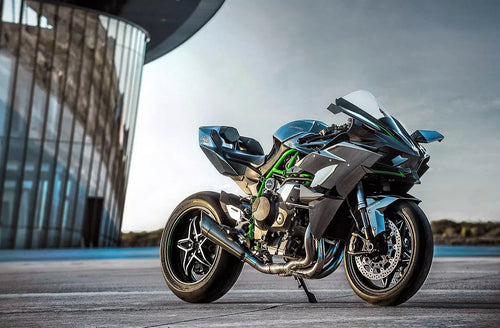
816 mots | Temps de lecture : 4 minute(s)
Honda in MotoGP: A history of domination and innovation
Honda is one of the most iconic and dominant manufacturers in MotoGP history. With more than 25 constructors' titles, dozens of riders' championships and revolutionary bikes, Honda has established itself as an absolute benchmark. Since its inception in 1959, the Japanese brand has made its mark on eras thanks to its technological innovation and legendary riders like Freddie Spencer , Mick Doohan , Valentino Rossi and Marc Márquez . But after decades of dominance, Honda is now facing an unprecedented crisis . A look back at its journey, from its triumphs to its current challenges.
Honda's racing debut (1959-1966)
Honda made its debut in the world championship in 1959, entering 125cc and 250cc motorcycles. In 1961, the brand won its first world titles with Mike Hailwood in the 250cc class and Tom Phillis in the 125cc class.
In 1966, Honda reached a milestone by establishing itself in the 350cc and 500cc classes. The Honda RC181 proved to be a formidable motorcycle and marked the beginnings of the brand's future dominance.
Temporary withdrawal and triumphant return (1967-1982)
Despite its success, Honda left Grand Prix racing in 1967 to focus on developing new technologies and the road motorcycle market.
Its return to 500cc in 1979 was marked by a bold attempt: the NR500 , a revolutionary motorcycle with a 4-stroke engine and oval pistons. Although technologically advanced , it failed to compete with the 2-strokes of Yamaha and Suzuki .
Learning from its mistakes, Honda then launched the NS500 , a more conventional and ultra-competitive motorcycle. In 1983, Freddie Spencer gave Honda its first 500cc title, marking the beginning of a new era.
The glory years in 500cc (1983-2001)
From the 1980s, Honda became the dominant brand in 500 cm³:
- Freddie Spencer achieved a unique feat in 1985 by winning the 250cc and 500cc titles in the same year.
- Wayne Gardner won in 1987.
- Mick Doohan dominated the category with five consecutive titles between 1994 and 1998.
- Valentino Rossi began a new dynasty by winning the 2001 title, before the transition to the MotoGP era.
With the NSR500 , Honda has one of the most successful machines in Grand Prix history.
The MotoGP era and Honda domination (2002-2019)
In 2002, the MotoGP class replaced the 500cc with 990cc 4-stroke engines. Honda hit the mark with the RC211V , ridden by Valentino Rossi , who won two consecutive titles.
Honda's great figures in MotoGP
- Valentino Rossi (2002-2003): Dominates with Honda before leaving for Yamaha .
- Nicky Hayden (2006): Won a historic title by narrowly beating Rossi.
- Casey Stoner (2011): Returns to Honda and wins with impressive ease.
- Marc Márquez (2013-2019): With 6 titles, he imposed an ultra-aggressive style and revolutionized the discipline.
Honda's Recent Challenges in MotoGP (2020-Present)
Since 2020, Honda has been facing major difficulties :
- Marc Marquez 's injury in 2020 left Honda without a competitive leader.
- The evolutions of the RC213V have not followed the progression of the Ducati and Yamaha .
- Riders like Pol Espargaró and Joan Mir struggled to adapt to the Honda.
Faced with the current dominance of Ducati and Yamaha , Honda is seeking to develop a bike more accessible to other riding styles and to recruit new talent.
Why is Honda a MotoGP legend?
Honda is one of the most successful manufacturers in history thanks to:
- Its innovation : The brand has always been a pioneer in chassis, electronics and engines.
- Its legendary riders : From Spencer to Márquez , Honda has attracted the best talents.
- His domination : More than 25 constructors' titles, an absolute record.
Conclusion
Honda is a true institution in MotoGP . Since 1959, it has constantly pushed the boundaries of technology and performance. Despite a difficult period since 2020, the Japanese brand remains a giant of the championship and is working on its return to the top . With a new generation of riders and technological innovations , Honda could soon regain its leading position.


